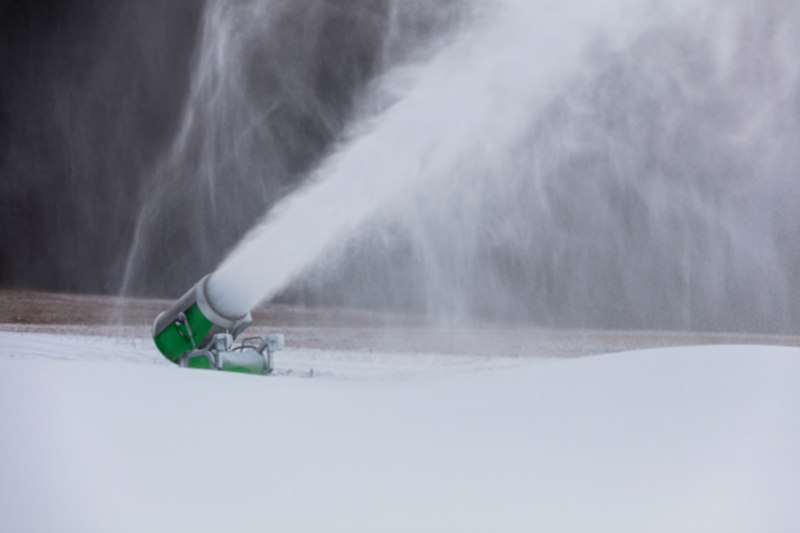The first national research to analyze the impact of generating artificial snow reveals the stress the process is placing on the environment, with approximately 17,000 homes’ worth of annual energy required to manufacture snow for yearly ski operations in Canada alone.

Image Credit: Taylor & Francis
Researchers from the University of Waterloo in Canada and the University of Innsbruck in Austria published their findings in the peer-reviewed journal Current Issues in Tourism, discovering that 130,095 tons of CO2e are required to produce the estimated 42 million cubic meters of machine-made snow in Canada in an average winter.
For reference, this is equivalent to 155,141 acres of forest sequestering the same amount of carbon in one year.
As more snowmaking is required as a result of future climate change, water and energy requirements will increase even as typical ski seasons shorten in the coming decades.
To make snowmaking and skiing more sustainable in Canada, the team advocates for collaboration among ski operators, policymakers, environmental organizations, and skiers to establish and promote comprehensive policies and practices that “prioritize sustainability in addressing the challenges posed by climate change and its associated impacts on snowpack.”
Our results emphasize the need to adopt a systems approach to ensure the long-term sustainability of ski tourism. This will include embracing innovation and investing in energy-efficient snowmaking technologies, promoting water conservation measures, and accelerating the transition to renewable energy sources.
Daniel Scott, Study Co-Author and Professor, Geography and Environmental Management Department, University of Waterloo
Daniel Scott adds, “Snowmaking can actually help reduce total emissions from tourism when it enables millions of skiers to ski regionally instead of driving or flying to far off ski resorts or selecting another type of carbon intense holiday. Net-zero compatible ski holidays are already possible in destinations like Quebec and our study shows a vibrant and resilient future for ski tourism is possible.”
Winter mountain destinations are an important aspect of Canada’s tourism industry. There are currently 237 ski areas in operation, with an average of 18.2 million skier visits each year, including 2.7 million overseas visitors.
However, this has ramifications for the long-term viability of ski tourism. The team discovered that snowmaking in Canada requires 478,000 megawatt-hours (MWh) of electricity yearly, resulting in 130,095 tons of associated CO2 emissions—and an estimated 43.4 million cubic meters of water to make over 42 million cubic meters of technical snow.
As climate change continues to have an influence on snowpack in ski areas around the globe, ski operators are largely depending on snowmaking to keep ski seasons open and visitors pleased.
The study anticipated that snowmaking requirements in Canada would rise by 55 to 97% by 2050. If terrain coverage and average snowmaking capabilities remain constant, water and energy requirements will increase correspondingly.
However, at least in Canada, good news appears to be on the horizon in the form of much-needed decarbonization policies, which Professor Scott claims will reduce ski operations-related emissions “substantially.”
What we can see is that snowmaking emissions are expected to decline substantially, thanks to the ongoing efforts to decarbonize provincial electricity grids in alignment with current policy targets. Future emissions will also be influenced by various other factors, including upgrades in snowmaking and grooming technology and increased terrain coverage.
Daniel Scott, Study Co-Author and Professor, Geography and Environmental Management Department, University of Waterloo
While this study provides an important first assessment of the environmental impacts of snowmaking and its prospective sustainability, the researchers note that as climate change advances and decarbonization targets are pursued, changes in emissions and water use will need to be re-evaluated along with destination-level sustainable development.
Journal Reference:
Knowles, N., et al. (2023) Sustainability of snowmaking as climate change (mal)adaptation: an assessment of water, energy, and emissions in Canada’s ski industry. Current Issues in Tourism. doi.org/10.1080/13683500.2023.2214358.